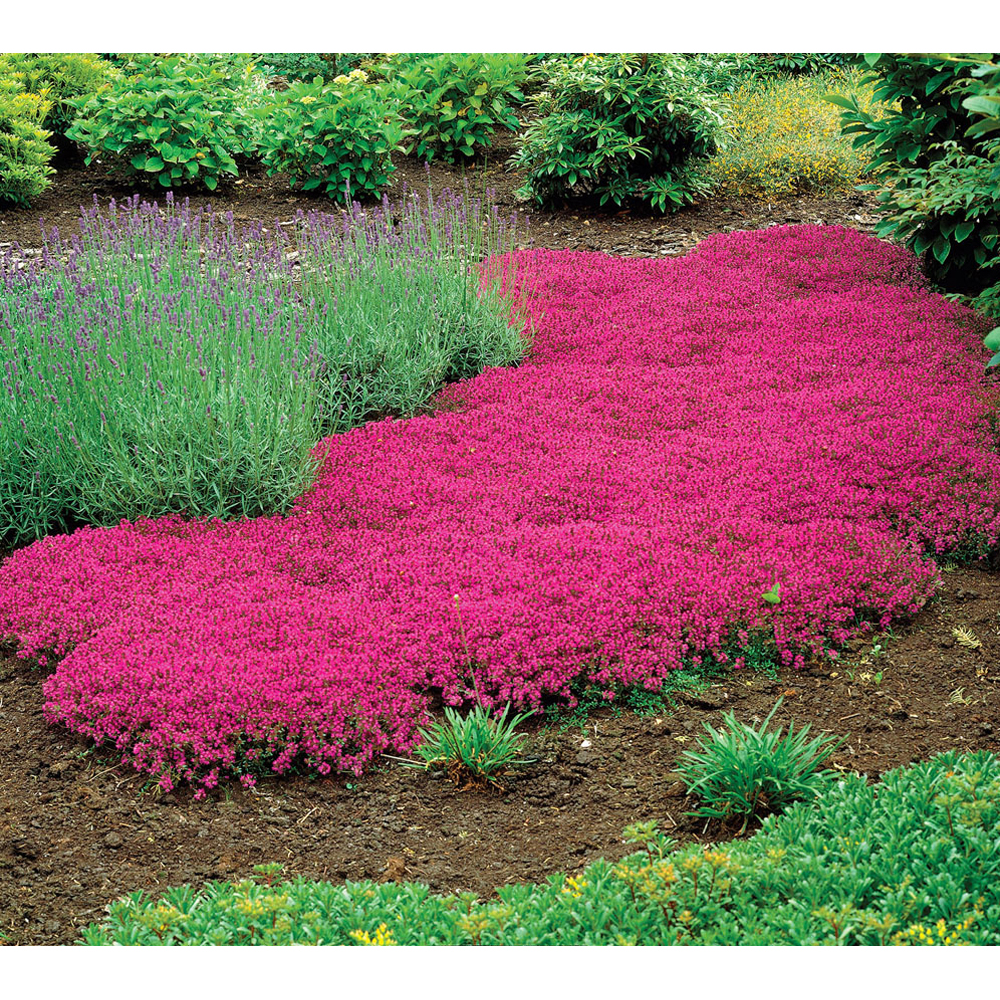


Native to Northern Europe, this herbaceous perennial is very drought tolerant and creates a nice dense mat of foliage. Used often as borders on flower beds and in between pavers on walkways, this is a groundcover that can handle light foot traffic. Dead parts can be carefully cut back and healthy outer parts of the plant can be replanted. Creeping Thyme is a very hardy ground cover with petite pink flowers in the Summer. After several years the center of plants will become woody and start to die back. Creeping Thyme will grow between 2-3 inches high and each established plant can spread to approximately 1 foot wide. A light mulching may be helpful to retain moisture in warmer and drier climates, but if seeds are planted in between pavers or in shadier areas mulching is usually not necessary.Ī light dose of delayed release fertilizer can be useful if you are planting in poorer soil, but good soil preparation (mixing in a 2-3 inch layer of manure, compost or other organic material prior to planting) should negate the need for fertilizer.Ĭreeping Thyme will not thrive in excessively clay or sandy soils. Once seeds are germinating well, water to a depth of 6 inches when the top few inches of soil dries out. Good seed to soil contact is necessary for ideal germination rates.

When planting, seeds should not be covered with soil, but rather pressed into the soil. Average germination time should be approximately 21-28 days and seeds should be kept consistently moist until germination is strong. Fall plantings should be avoided to protect against freeze damage. Division of established plantings can be done in March and April.
Planting creeping thyme ground cover full#
Creeping thyme is a slow grower and will take more than one season to reach its full potential.ĭirect Sow seeds outdoors when temperatures are consistently in the high 60s or above. Seeds can also be started indoors 8-10 weeks before your average last frost date.Ĭreeping Thyme prefers well drained soil with a neutral pH (between 6.5 and 7.5) in an area where it receives good sun, but can also tolerate partial shade. Direct sow seeds outdoors in late spring when temperatures are consistently in the high 60’s or above. Creeping Thyme is not generally susceptible to disease or insects but can provide a barrier for veggies and ornamental plantings.Ĭreeping Thyme is a perennial herb which will over-winter well in zones 4-9. Used often as borders on flower beds and in between pavers on walkways, this is a groundcover that can handle moderate foot traffic. Blooms: Summer, Late Summer, Early Fall, FallĬreeping Thyme is a popular and adaptive dwarf ground cover that is popular for landscape designs.


 0 kommentar(er)
0 kommentar(er)
